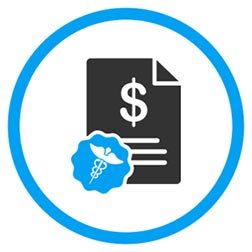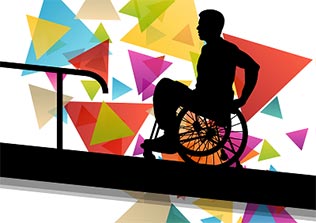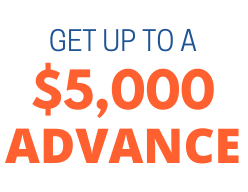
You’ve made it through the worst of it! You survived your accident and your recovery is in full swing. Perhaps you’ve even been awarded a structured settlement and are receiving periodic payments as a result of a win in court (if so, you may want to cash in those payments for a lump sum of cash.
Connect with RSL Funding for a free quote). Coming out on top after an accident is no easy feat, especially when it’s time to get back to real life. And if you’ve become disabled as a result of your accident, “real life” is going to look very different from what it was before.
One of the main concerns most people have during recovery are the costs of medical care and rehabilitation. Treatment for injuries that don’t require surgery, such as minor sprains and lacerations, can range from $200 to $5,000 for the initial visit. And that’s just the tip of the iceberg. Therapy after back surgery will run you $30 grand, at least.
But you’re one tough cookie and can certainly prevail over the high costs of accident recovery. Below, we’ve compiled a few simple ways you can keep money in your pocket during your recovery and hopefully, over the long haul.
1) Compare Rehabilitation Facilities
According to Cost Helper Health, the cost of physical therapy typically costs $50-$350 or more per session, depending on how long it lasts, the particular service provided, and the practitioner. Physical therapy provided in a hospital setting tends to be more expensive. But there are ways you can minimize the financial burden. Medicare.gov offers a comparative tool to help you locate a physical rehabilitation facility within your budget. If you’d prefer outpatient services, try Select Medical – this company’s tool may be able to guide you toward a cheaper inpatient option.
2) Look for Discounted Prescriptions

Have you been prescribed pain meds? Chances are, you’re paying too much for them. Shopping around for discounted meds is a must during and long after your recovery. After checking with your insurance company to see whether or not it covers a particular medication, check out GoodRx or WellRX. They’re tools that help patients find the lowest prices on medications. It’s important to understand that pharmaceutical companies are in the business of making money, so they’re often going to charge high prices on meds (because they can). Being savvy and using these prescription discounting tools is a great a way to pay less in the long run. Remember, you can also save money on prescription drugs by choosing generic equivalents of big-named meds. We’re lookin’ at you Tylenol.
3) Pay in Cash Whenever Possible
This is a little-known secret: doctor’s offices are typically cash-poor. They’ll often offer discounts on services and procedures if you ditch the credit card and offer to pay in cold, hard cash. Taking cash means that the office doesn’t have to file an insurance claim and pay credit card transaction fees. In short, doctors’ offices would rather avoid the hassle. Stopping by the ATM and paying for services up-front could help you avoid a heftier bill later.

4) Open a Health Savings Account (it’s pre-tax!)
Not every health insurance plan is the same. Depending on your coverage, some procedures, medical tests, or even prescription drugs may not be covered. Opening a “health savings” account will help you save money for these uncovered items on a pre-tax basis. To qualify for a Health Savings Account, you must be enrolled in a high-deductible health plan (HDHP), which is a plan that doesn’t cover all of your medical expenses. If you qualify, your employer may offer funds to your health savings account too – either way, the benefits of saving money far outweigh the high costs of certain medical expenses.
5) Review Bills for Errors
When you go to the doctor, the visit is typically itemized with each service given a particular code. When your doctor’s office submits the claim, these codes sometimes differ from what the insurance company has on file. After comparing and correcting discrepancies, you may end up with a higher bill, unnecessarily.
To help avoid this, ask for a copy of your visit summary, which should include a list of all the services you received. If you notice a discrepancy or error, request copies of your medical chart and/or pharmacy ledger so that you can compare the doctor’s orders for services with what you were billed for. It’s better to be safe than sorry.

6) Sell Your Structured Settlement or Annuity
We mentioned earlier that if you’re feeling overwhelmed by the costs of your accident recovery and you have been awarded a structured settlement, you can sell your future payments for a lump sum. The cash can help you pay for your recovery, get on top of your bills, and consequently, provide some much-needed peace of mind. If you’ve been disabled, these funds become especially important. From medical bills to regular household expenses, having a lump sum at your disposal can give you a leg up as you transition back into your normal day-to-day activities.
Conclusion
The path to a full recovery after an accident might be rocky…and by “rocky,” we mean expensive! You can take charge of your bills by doing a little research, asking questions, and utilizing cost-saving tools. Taking some of the financial load off of your shoulders will go hand-in-hand with you getting back on your feet. You’ve already proven that you can handle whatever life throws your way (including an accident). Now, it’s time to show your bills who’s boss.





